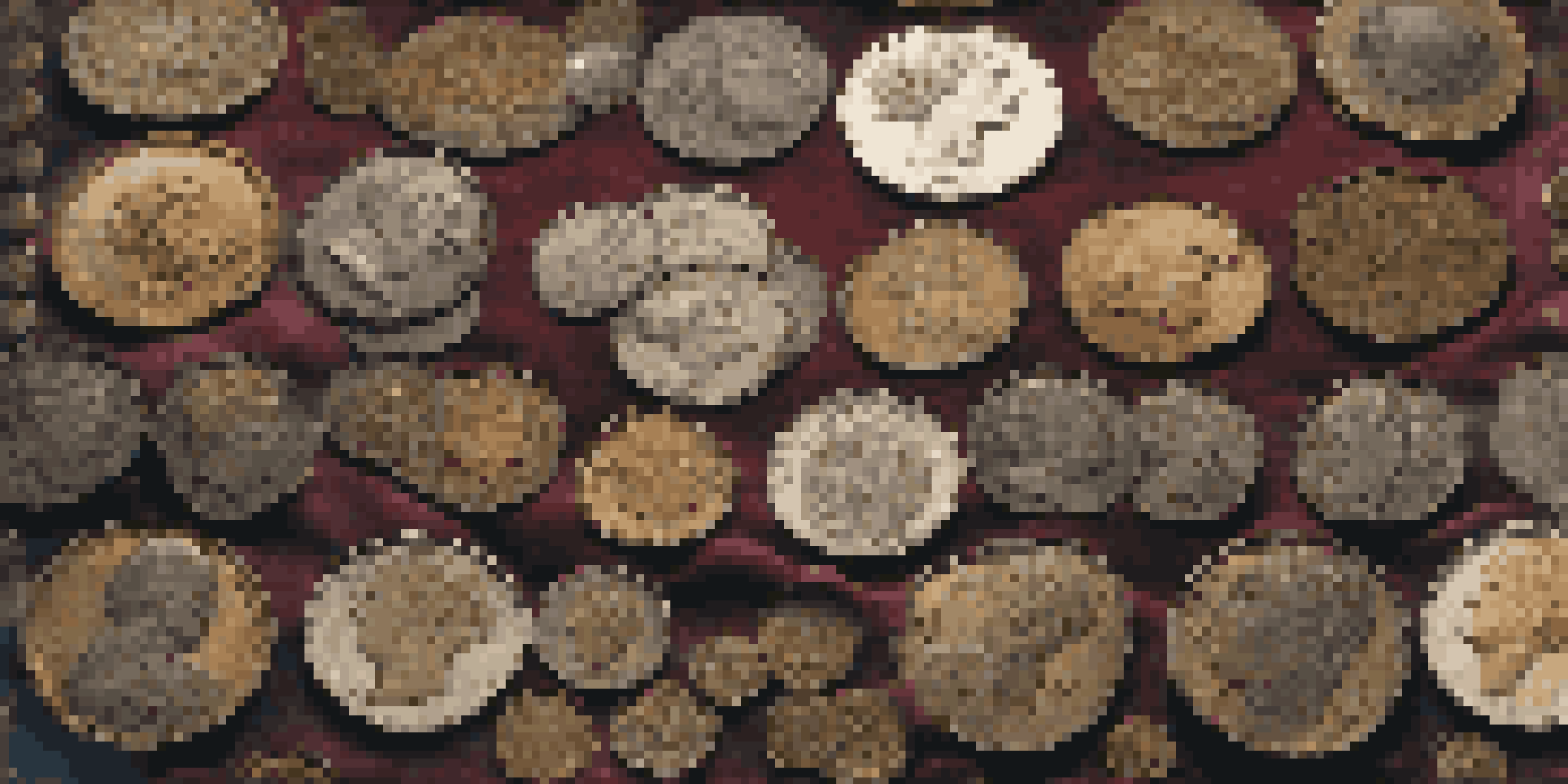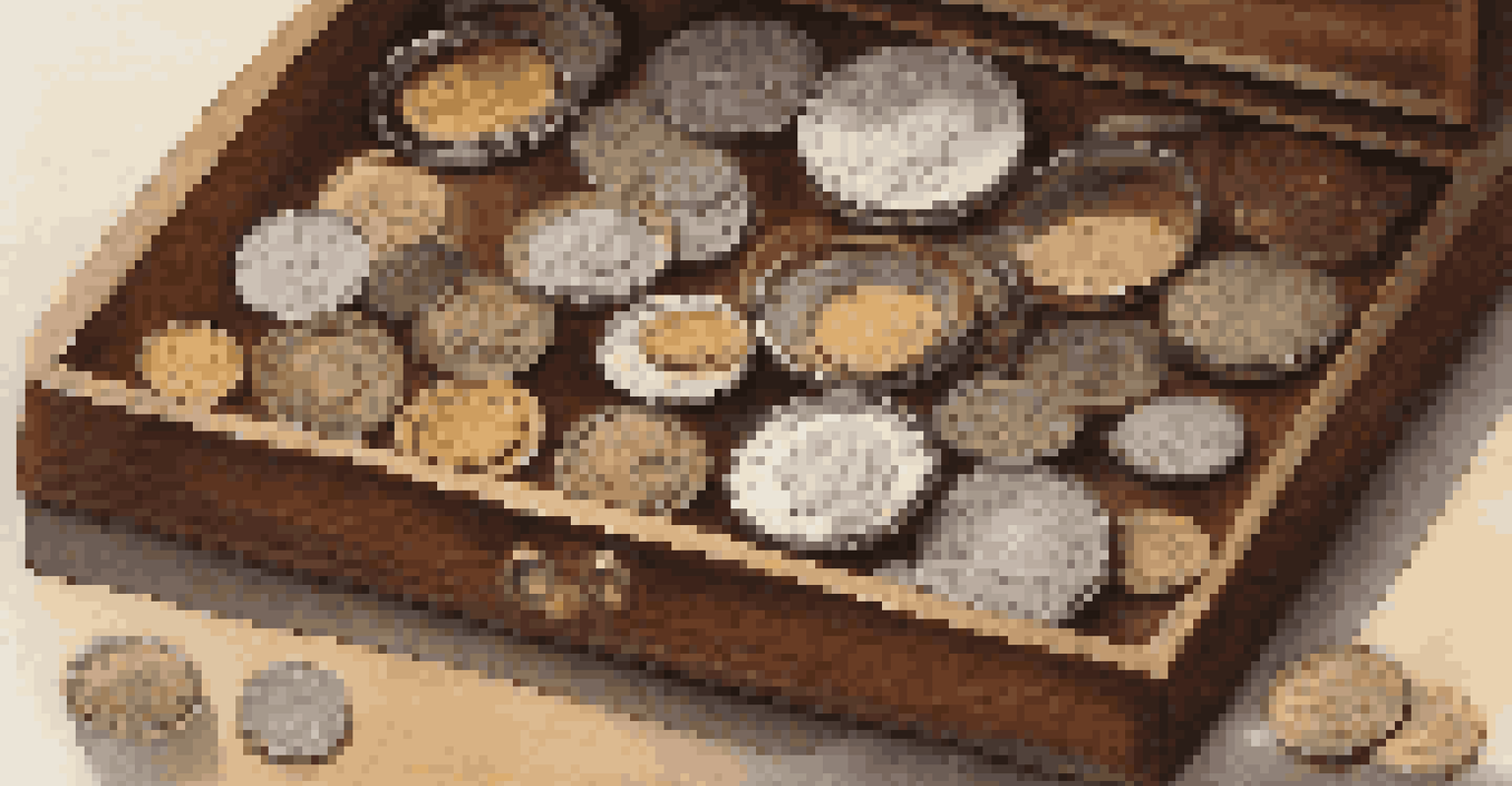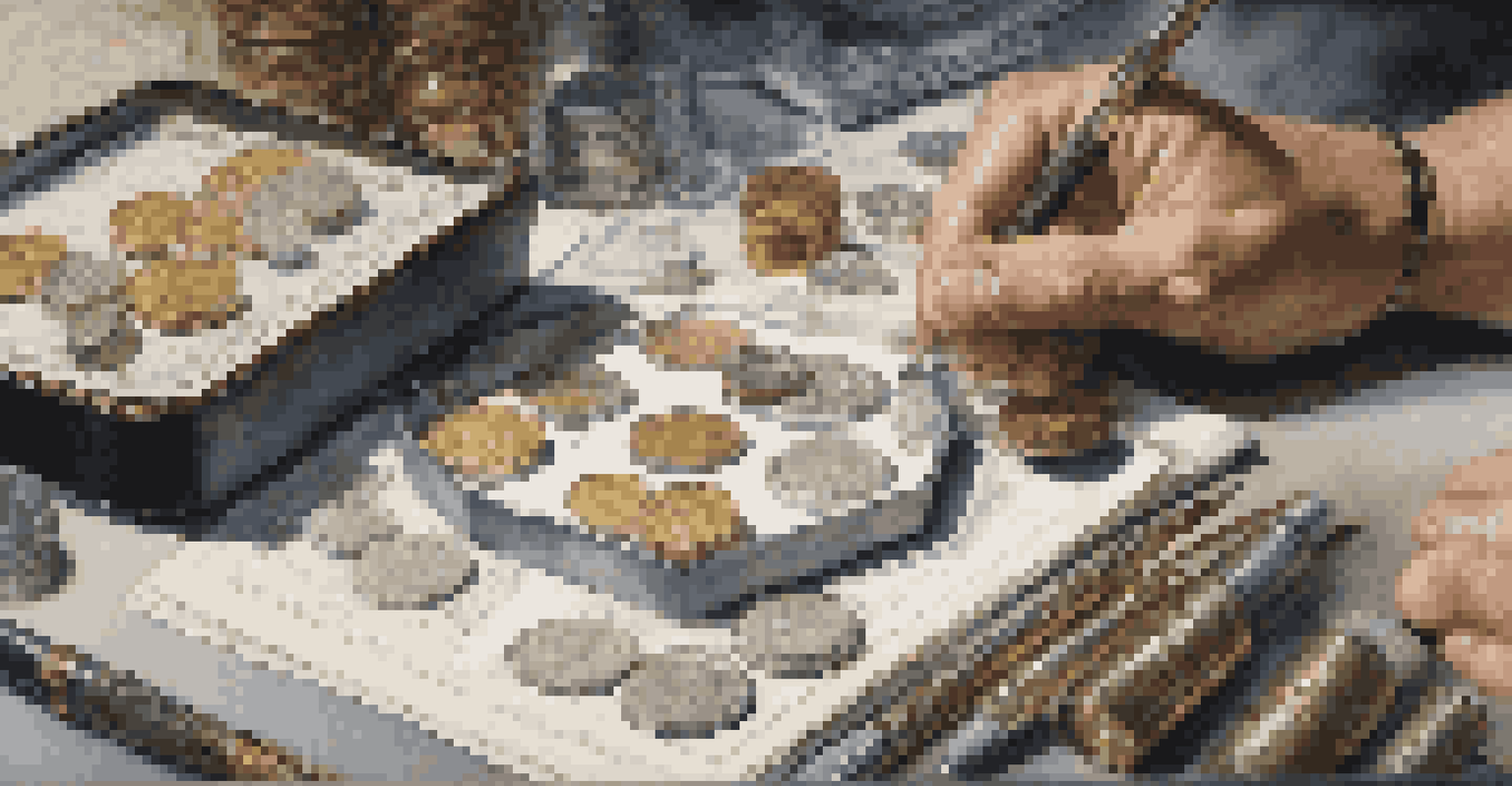Exploring the World of Error Coins: Value and Rarity

Understanding Error Coins: What Are They?
Error coins are unique pieces of currency that have been struck with mistakes during the minting process. These errors can range from minor flaws, like misprints, to significant mistakes, such as coins struck on the wrong planchet or with double strikes. Each type of error coin tells a story about the conditions and machinery involved in its creation, making them fascinating collectibles.
Coins are a form of currency, but they are also a story, a connection to our past.
These coins not only showcase the artistry and precision of coin production but also highlight the imperfections that can occur. For example, a coin might display an inverted design or be missing a key feature entirely, which adds to its intrigue. Collectors often seek out these peculiarities, as they provide insight into the minting process and the history behind the currency.
In essence, error coins are more than just currency; they are tangible pieces of history. Each coin carries a unique narrative, transforming the mundane into the extraordinary for collectors and enthusiasts alike.
Types of Error Coins: A Closer Look
There are several types of error coins, each with its distinct characteristics. Some common categories include striking errors, planchet errors, and die errors. For instance, a striking error might occur when a coin is struck twice, resulting in a doubling effect that can be visually striking and desirable to collectors.

Planchet errors involve issues with the metal disc on which coins are struck. An example of this is a coin that was minted on a foreign planchet, leading to unexpected designs or sizes. These unique features can significantly increase a coin's value and make it a centerpiece of any collection.
What Are Error Coins?
Error coins are unique currency pieces created with minting mistakes, making them fascinating collectibles with rich histories.
Die errors occur when the minting die used to strike the coin is damaged or misaligned, resulting in oddities like off-center strikes or missing details. Each type of error coin adds layers of complexity and rarity that collectors find irresistible, making them a captivating area of numismatics.
How Error Coins Are Valued
The value of error coins can vary drastically based on several factors, including the type of error, its rarity, and demand among collectors. Generally, the rarer the error, the more valuable the coin. For example, a well-known error coin like the 1955 double die penny can fetch thousands due to its limited availability and high demand.
The beauty of collecting lies not in the things we possess, but in the stories they tell.
Condition also plays a crucial role in determining value. Coins that are in mint condition or have been well-preserved tend to be worth more than those that show signs of wear and tear. Collectors often refer to grading standards to assess a coin's condition, which can influence its market price.
Additionally, market trends can affect the value of error coins. Just like any collectible, the popularity of specific error types can ebb and flow, impacting how much collectors are willing to pay. Staying informed about these trends can help collectors make wise purchasing decisions.
Where to Find Error Coins
Finding error coins can be an exciting treasure hunt for collectors. These coins can often be discovered through coin shops, online marketplaces, and coin shows. Each venue presents its own unique opportunities, whether it's sifting through a dealer's inventory or exploring a vast selection online.
Another popular way to find error coins is by searching through standard coin rolls or collections. Many collectors enjoy the thrill of examining everyday coins in hopes of uncovering hidden gems. This method can yield surprising discoveries, as errors can occur in any batch of coins.
Valuation of Error Coins
The value of error coins varies based on rarity, condition, and market demand, with rarer errors typically fetching higher prices.
Networking with other collectors can also lead to exciting finds. Participating in online forums, social media groups, or local coin clubs can provide insights and even trading opportunities with fellow enthusiasts. Sharing knowledge and experiences can enhance the thrill of the hunt and expand one's collection.
The Role of Grading in Error Coins
Grading is essential in the world of error coins, as it helps determine their quality and, consequently, their value. Professional grading services evaluate coins based on specific criteria, such as overall appearance, strike quality, and surface preservation. A higher grade typically correlates with a higher value, making grading an important consideration for collectors.
Understanding how grading works can empower collectors to make informed decisions. For example, a coin graded as 'MS-65' (Mint State 65) indicates a high-quality piece that has minimal imperfections. In contrast, a coin graded as 'VG-8' (Very Good 8) shows significant wear and is less desirable for most collectors.
While self-grading can be tempting, relying on professional services can provide a more accurate assessment. This helps ensure that collectors know exactly what they're purchasing, aiding in both buying and selling decisions in the error coin market.
Storing and Protecting Your Error Coin Collection
Proper storage and protection of error coins are crucial for maintaining their value over time. Coins should be kept in a controlled environment away from humidity, heat, and direct sunlight, all of which can cause deterioration. Using coin holders, such as flips or capsules, can help shield the coins from physical damage and environmental factors.
Avoiding handling coins with bare hands is also important, as oils and dirt from fingers can leave marks or corrode the surface. Instead, use cotton gloves when handling your coins to keep them in pristine condition. This simple practice can significantly prolong the life and quality of your collection.
Finding and Protecting Coins
Collectors can discover error coins through shops and rolls, and proper storage and handling are essential for maintaining their value.
Additionally, consider cataloging your collection, noting details such as the type of error, purchase price, and condition. This not only helps keep track of your assets but also provides valuable information should you decide to sell or trade in the future.
The Future of Error Coins: Trends and Predictions
As the numismatic community continues to evolve, the future of error coins looks promising. With the rise of social media and online communities, more collectors are discovering the allure of error coins. This increased interest is likely to drive demand and, in turn, the value of these unique collectibles.
Additionally, as technology advances, new minting processes may lead to different types of errors, presenting fresh opportunities for collectors. For example, innovations in minting machinery could create new error types that haven't been seen before, further diversifying the market.

Ultimately, the future of error coins will depend on collector interest and market dynamics. Staying informed about trends and being open to new discoveries will help collectors navigate this exciting landscape and continue to find value in the world of error coins.